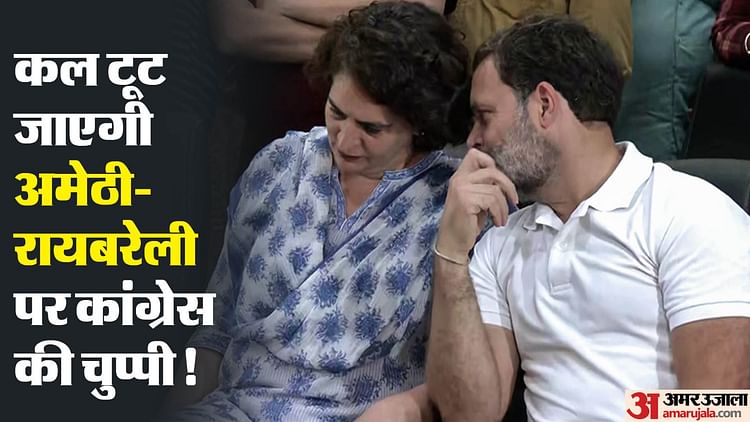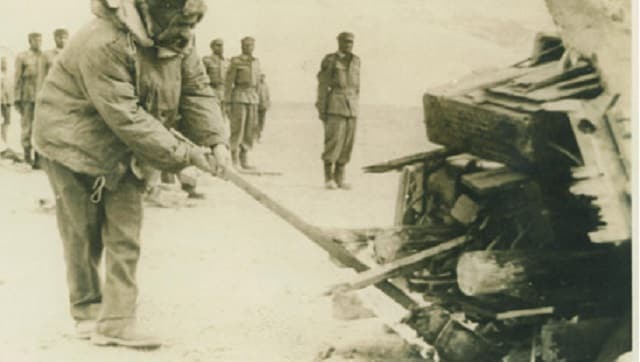
The Battle of Rezang La went down in the annals of military history as one of the greatest last stands of all times – comparable probably only to the famous Battle of Saragarhi, in the Indian context.
Of India’s many remarkable military expeditions, the one that stands out for the sheer tenacity and heroics of the platoon involved is the Battle of Rezang La. Fought in the subzero temperatures and adversarial terrains of Eastern Ladakh, Rezang La is the only high point in an otherwise embarrassing chapter of the Indian military history: the 1962 Indo-China war.
Now as the 59th anniversary of the legendary military defence event approaches, India is all set to revamp a nearly six-decades old war memorial to honour those who died in one of the greatest last stands of all times. Defence minister Rajnath Singh will preside over the event planned for 18 November and a limited number of war veterans and army generals will attend the event.
The original memorial comprised a Spartan inner structure carrying the names of the martyred soldiers. While this structure will remain, the memorial is being expanded, and two gazebos, a Major Shaitan Singh auditorium and a Rezang La gallery will be added, along with other infrastructural works, according to News18.
Major Shaitan Singh was the company commander during the Battle of Rezang La. He was awarded the Param Vir Chakra posthumously.
Here is a look back at the illustrious battle fought by the 13th battalion of the Kumaon Regiment against the Chinese People’s Liberation Army
What happened?
The Short Story: In this epic battle, ill-equipped, poorly kitted out and grossly out-numbered yet valiant soldiers of ‘C’ (Charlie) Company of 13 Kumaon Regiment beat back repeated waves of the attacking Chinese. Of the 120 soldiers ambushed at the post, as many as 114 died fighting and delivered the heaviest blow to the Chinese in the indomitable war of 1962. (The Chinese officially admitted 500 casualties at Rezang La, their highest in any engagement of that war).
Five Indian soldiers were taken prisoners as wounded — they all escaped — and one was sent back by the commanding officer, Major Singh, to tell the story of the battle to the rest of the world as he realised that the Company may not survive to tell the tale.
When the bodies were recovered three months later, they were still holding their weapons, ready to charge in fighting stance. In some cases, when their ammunition ran out, they jumped out of their trenches and engaged the enemy in hand-to-hand combat; their bodies, carrying many bullet and bayonet wounds, were found lying a few yards ahead of their position.
The Long Story: During the war that started on 20 October, the 13th Battalion of Kumaon Regiment, Charlie ‘C’ company comprising 123 Ahirs was positioned in Chusul sector, at a height of 5,000 metres (16,000 ft) above sea level. The battalion under the command of Major Shaitan Singh was holding a position at Rezang La, and the area was defended by five platoon posts. Since border skirmishes were flaring up at other points the 120-strong unit was staying vigilant and prepared at their posts. However, apart from the adverse topography and weather conditions, the soldiers faced another critical disadvantage: a crest behind the ridge where they were posted prevented Indian artillery from being able to support these jawans. So the soldiers waited in their positions in freezing cold, watching out for any sign of Chinese advancement.
In the morning hours of 18 November, 1962, the Chinese launched a silent attack advancing through nullahs and cullets in the dim dawn lighting. But Indians prepared for an offensive under Singh’s command, and within minutes of noticing the first wave of PLA soldiers trying to climb up the ridge, every gun in Singh’s small artillery was trained at the Chinese. At 5:00 am, as platoons got a better sight of the Chinese, they started firing from all possible angles wiping out the first wave of attack. The company was mostly armed with light machine guns, rifles, mortar, and grenades.
In contrast, the Chinese, who did not anticipate the initial onslaught and sustained heavy losses, went on an artillery spree as they kept coming back with more numbers. According to author Shiv Kunal Verma’s account in his book 1962: The War That Wasn’t: “The Chinese threw everything at their disposal to blast out Shaitan Singh’s men. Apart from heavy artillery that systematically blew up the stone sangars, the Chinese lined up 132mm rockets, 120mm heavy mortars, 81 and 60mm medium mortars, and 75 and 53mm RCL guns in a direct firing role.”
According to Verma, by 7.30 am two of the nine platoons deployed at the ridge were overrun by Chinese. But the Singh along with his company havildar major, Phool Singh, and two other men decided to join up with No 9 Platoon, the forward-facing platoon some 550 metres away.
During the battle, Singh continuously moved from post to post reorganising defences and boosting the morale of his men. As he moved between the posts without any cover, he was seriously wounded in the abdomen. But he ordered his men to abandon attempts for his evacuation and use resources to defend the post with the remaining men.
One of the few surviving soldiers from the company recounted to journalist Shekhar Gupta how he hid his commander’s body in the snow so that the Chinese could not recover it. “When we were overrun — my saab was lying motionless, and I was wounded — I remembered what (Company Havaldar Major) Harphool (Singh) had said, ‘Do not let the Chinese get their hands on Major saab’s body’. So I opened the sling of the rifle and tied Major saab to myself with the belt, joining our bodies together at the waist. And then, slowly, I started to roll… there was very little life left in him.”
“…After rolling for 400 yards, I stopped near a boulder to catch my breath. I was thinking that the company headquarters are below, so I should try to somehow get a couple of people from there to help me, so I can take saab down. But when it was 8.15 by his watch, I noticed that the Major saab was no longer alive. Because Major saab’s watch ran by his pulse, and when the pulse stopped, the watch stopped as well. I took off the Major’s gloves, and slid his body between boulders to hide it, so that it remained safe until someone could come to fetch it. Then I made my way down,” Honorary Captain Ramchandra Yadav told Gupta in an interview.
Three months later after the snow melted Red cross recovered his body with his gun still in his hands at that very location. It was brought to Jodhpur, his native place, and cremated with military honours.
Major-General Ian Cardozo writes in his book Param Vir, Our Heroes in Battle: “When Rezang La was later revisited, dead jawans were found in the trenches still holding on to their weapons… every single man of this company was found dead in his trench with several bullets or splinter wounds. The 2-inch mortar man died with a bomb still in his hand. The medical orderly had a syringe and bandage in his hands when the Chinese bullet hit him… Of the thousand mortar bombs with the defenders, all but seven had been fired and the rest were ready to be fired when the (mortar) section was overrun.”
Captain Yadav’s account, as told to Gupta is eerily similar. Yadav said that the tales of his Company’s gallantry was such that his own commanders in Delhi did not believe him at first. During the debriefing, Yadav was threatened with court-martial by his superiors who thought he was narrating made up tails. “I told them to note down three things… Major saab’s body, his gloves will be found in the same spot. in the company, you will find every jawan with bullet wounds on his chest, you will not get wounds on their backs; nursing assistant Dharam Pal, put bandages on 32 wounded soldiers, and he died while bandaging his comrades. The jawan, he is holding the light machine gun, and he has bullets in his chest, and is dead… But the machine gun hasn’t fallen from his hands even when he is dead, he is clasping the machine gun. And the jawan throwing the grenade, dead, with the grenade still in his hands; the Chinese couldn’t take the grenade off his hand… jawans died with their bayonets in their hands, in a crouching position, bullets in their chest, dead, holding the naked bayonet in a fighting stance.”
The surviving soldiers claim they defended the post till the very end and 120 of them killed 1,300 Chinese soldiers despite having military advantage and superior resources. International accounts vary. But the fact of the matter remains that Rezeng La pass is not occupied by the PLA and the Chinese declared ceasefire on 20 November, 1962, just two days after the Battle of Rezang La.
The company to date remains one of the most highly decorated groups in the Indian military’s history. Singh received a Param Vir Chakra, the highest military honour, posthumously for his “supreme courage, leadership and exemplary devotion to duty”.
Eight other soldiers received Vir Chakras, four jawans got Sena medals while one was Mentioned-in-Dispatches.
Why is Rezang La important?
Rezang La and Rechin La are mountain passes on the ridgeline adjoining the Chushul Valley, which China claims as its border. India’s claimed border is further east, and it coincides with the border shown on most British and international maps prior to Indian independence.
Because the Charlie C Company valiantly defended their post, it not only successfully stopped China’s advance but also resulted in the Chushul airport being saved, thereby preventing a possible Chinese occupation of the entire Ladakh region in 1962.
Moreover, the post and the pass defended by these soldiers was also crucial for India during border standoff in the summer of 2020.
With Rezang La, India gets a clear view of the Spanggur Gap, China’s Moldo Garrison and also of the Spanggur lake. Simply put, because of these soldiers’ sacrifices the Indian troops are sitting on the dominating heights atop a ridgeline connecting the south bank of Pangong Tso to Spanggur Tso going through Chushul-Rezang La.







More News
DNA Exclusive: Sharia Takes Centerstage In Phase-3 Election Campaign
Confusion reigns as three ‘Rajkumars’ battle for Banswara | India News – Times of India
Over 63% Turnout In Phase 2 Of LS Polls; Tripura Records 79.46%, Manipur 77.32%